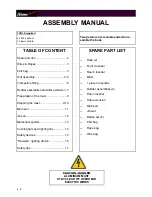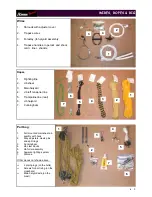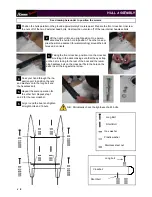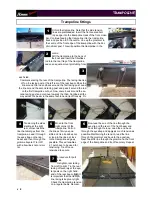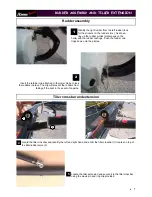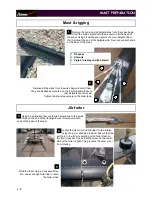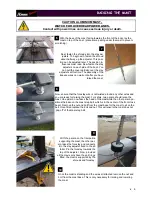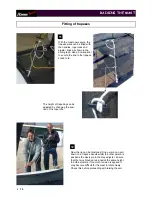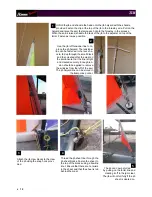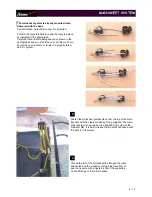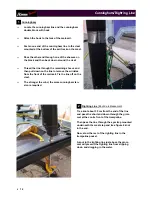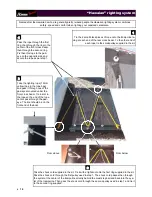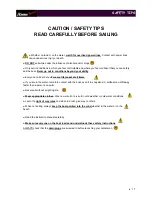
•
15
Safety devices
Mast float device (OPTION)
This device prevents the mast from sinking in case of capsize thus allows
easy righting.
1- Unscrew the four screws
that are on the device.
2- Adjust the alu plate so
that the holes fit the four
holes on the device and fix it
with the screws.
3- Fix the device on the
mast head using the bolt
and the two washers as
shown on the photo.
Safety cords
While sailing, the safety cord on the trampoline (blue line on the photo, that may be of a diffe-
rent colour) prevents the crew from falling off of the cat, and allows easy righting in case of
capsizing.
The red cord on the rear crossbar permit to tow the boat on the water.
on the trampoline
Under the trampoline
Towing cord
As serial or optional equipment, the mast float devise is already mounted. You
just need to fit it on your mast head (see step 3). If it is not mounted, follow
steps 1 to 3 below.


